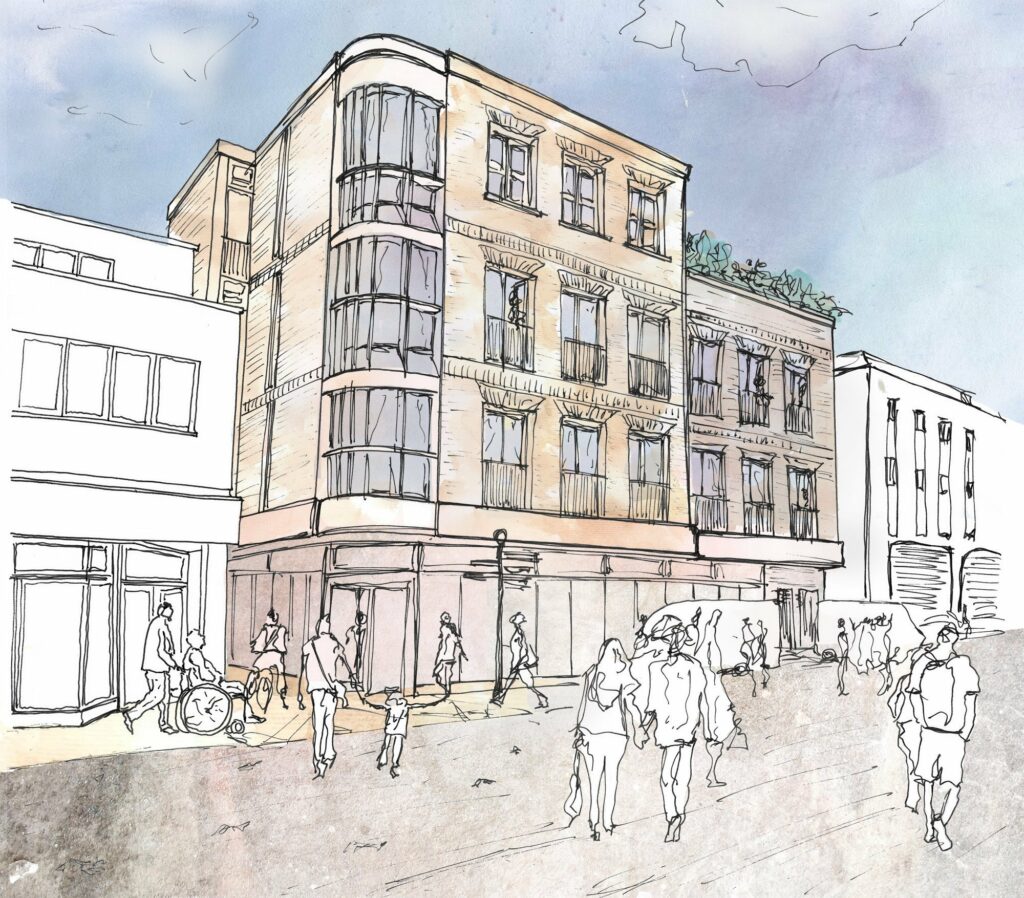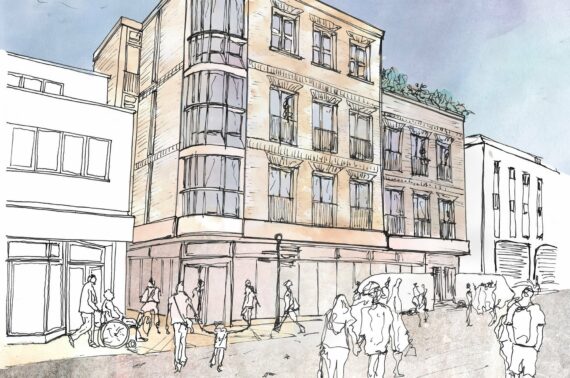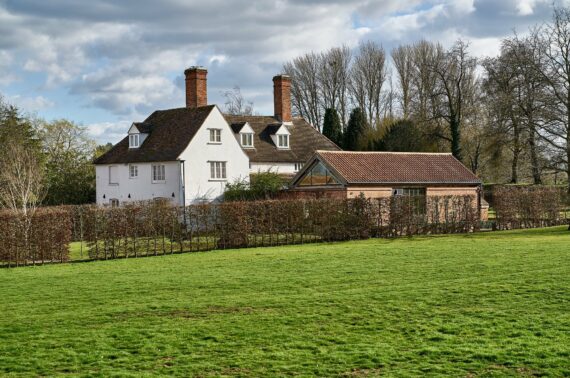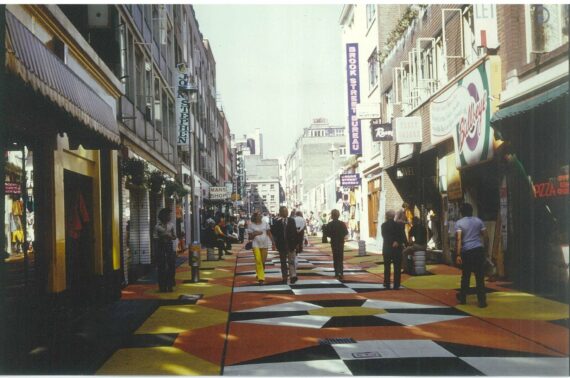Department (stores) to (downsizer) Apartments?
- | Victoria Perry
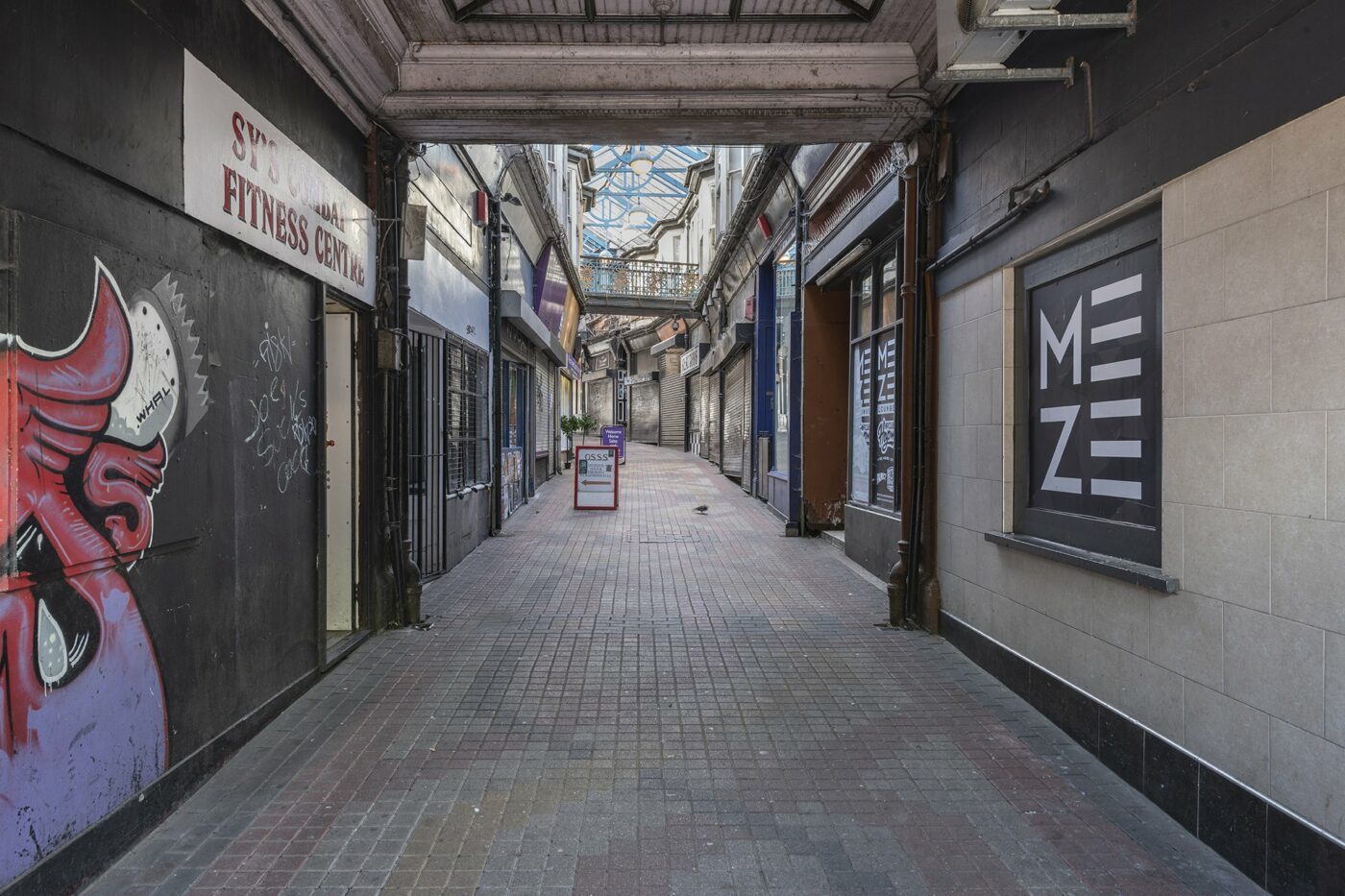
The British high street is struggling. Every week there is news of business collapses and Company Voluntary Arrangements as retailers try to negotiate rent decreases to compete with nimbler on-line companies.
But this struggle is not new. 25 years ago the high street faced competition from suburban shopping malls; articles bemoaned the rise of charity shops; pedestrianisation schemes were hastily implemented and ‘town centre managers’ appointed to try and stem the flow of customers to out-of- town stores with large floor plates and easy deliveries. Indeed, perhaps the rise of ‘e-tailing’ could, with some imagination, help to revive high streets by reversing the suburbanisation of British life.
The online stores of 21st century Britain don’t need huge stock rooms and vast delivery bays, but they do require attractive showrooms in easy-to-reach locations. Most of Britain’s towns and small cities contain historic cores with attractive old buildings; many listed, others part of conservation areas. So why not reinstate ground floors of older buildings to make boutique showcases and redevelop undistinguished post war blocks and malls into glamorous, high quality apartments with lifts and generous balconies? Such homes would be ideal for people looking to downsize, thus freeing up family-sized houses for, er, families.
Previous campaigns to enliven town centres by encouraging ‘living over the shop’ never created enough critical mass to be successful and didn’t tackle the issues of building management, parking and step-free, discrete access. Noisy Saturday evenings when the pubs closed followed by dusty Sunday afternoons in a half-empty shopping parade was not a lifestyle choice favoured by many. But concerted planning and policy changes, as outlined in the minutes of last year’s Parliamentary report on retailing – coupled with more flexibility from development funders – could change town centres for the better.
Some enlightened developers are already turning their attention to town centres. Earlier this year Donald Insall Associates was appointed to design new apartments in the historic market town of Bury St Edmunds in Suffolk, revitalising a dead link between the old market square and more recent developments. Insall is also advising on the design of creative new mixed-use schemes in conservation areas in Bristol and Birmingham.
More people living in town centres means more need for centrally located doctor’s surgeries, libraries, butchers, grocers, hairdressers and coffee shops. Homes in town centres help constrain anti-social behaviour by providing informal surveillance at night. And living centrally doesn’t mean giving up on nature; most British towns have good parks and delivery yards and flat roofs could be greened as communal gardens or allotments designed to foster ‘social gardening’.
Last year I attended a stylish 70th birthday party in a new apartment at King’s Cross, central London – a former red-light district. The couple had relocated from their Georgian town house a few years previously. It had been a great move: a vast kitchen/living room to entertain family and friends; wonderful views of the canal and listed station buildings; great public transport access; local shops; and a concierge to sort out deliveries and repairs so they could go travelling abroad in the winter. It was an enticing vision of the future for older generations; one that could be replicated in the historic centres of towns and small cities throughout the country.
Related links
High Street Performance and Evolution: A brief guide to the evidence – University of Southampton (2014)
John Fernie, Leigh Sparks, Alan C. McKinnon, (2010) “Retail logistics in the UK: past, present and future”, International Journal of Retail & Distribution Management, Vol. 38 Issue: 11/12, pp.894-914, https://doi.org/10.1108/09590551011085975
